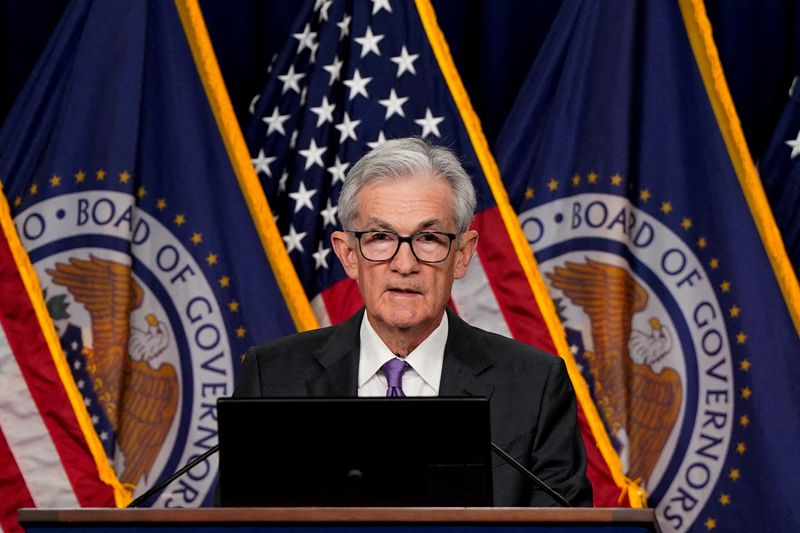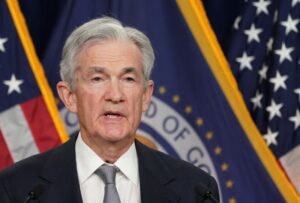
New US inflation data ‘along the lines’ of what Fed wants, Powell says
By Howard Schneider and Ann Saphir
WASHINGTON (Reuters) -The latest U.S. inflation data is “along the lines of what we would like to see,” Federal Reserve Chair Jerome Powell said on Friday in comments that appeared to keep the central bank’s baseline for interest rate cuts this year intact.
The personal consumption expenditures (PCE) price index data for February, which was released on Friday, “is what we were expecting,” Powell said, and even though the numbers showed less of a slowdown than last year, “you won’t see us overreacting.”
The data last month were “not as low as most of the good readings we got in the second half of last year, but it’s definitely more along the lines of what we want to see,” Powell said during an appearance at the San Francisco Fed where he was interviewed by Kai Ryssdal of public radio’s “Marketplace” program.
Powell’s comments were in line with his remarks after the Fed’s policy meeting last week, in which he said higher-than-expected inflation in January and February had not changed the sense that price rises would keep falling this year to the central bank’s 2% target.
U.S. Commerce Department data showed the PCE price index increased at a 2.5% annual rate in February, up from 2.4% in the prior month. The number excluding volatile food and energy prices rose 0.3% on a month-to-month basis, slightly faster than Powell anticipated when he said last week that February core inflation would be “well below” 0.3%.
Still, the Fed chief indicated the February report did not undermine the central bank’s baseline outlook.
Some details of the PCE data, economists noted, showed improvement in aspects of inflation that the Fed considers important, even as the headline numbers have shown little progress in the first two months of the year.
The central bank last week held its benchmark overnight interest rate steady in the 5.25%-5.50% range and also reaffirmed – narrowly – a baseline projection that the rate will fall by 0.75 percentage points by the end of this year.
The Fed is expected to hold rates steady, as it has since July of last year, at its April 30-May 1 policy meeting.
Policymakers by then will have received inflation and jobs reports for March, and the initial gross domestic product growth estimate for the first three months of the year.
While Fed officials have been careful to say they don’t put much weight on any single month’s data, the March readings could have an outsized bearing on their policy discussion if they confirm – or perhaps even more if they contradict – an anticipated job and wage growth slowdown and a cooling of housing inflation.
Economists polled by Reuters expect the March jobs report, which will be released next week, to show continued strong payroll growth, with 200,000 jobs added, but with annual wage growth, at 4.1%, hitting its slowest pace since June 2021.
Powell in recent weeks has had to reconcile expectations for rate cuts to begin this year with data showing improvement in the inflation number had slowed to start the year.
“We need to see more” progress on inflation before cutting rates, he said on Friday. “The decision to begin to reduce rates is a very, very important one … The economy is strong right now, and the labor market is strong right now. And inflation has been coming down. We can and we will be careful about this decision because we can be.”

